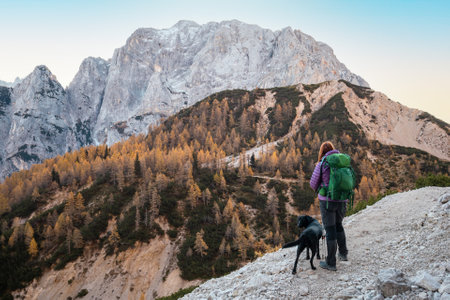1. Planning Ahead: Know the Campground Rules
When it comes to camping with your family and furry friends, preparation is half the battle. Before you hit the open road, take the time to research pet-friendly campgrounds in your destination area. Not every public campground welcomes pets, so start by checking official websites or calling ahead to confirm their pet policy. Look for details about leash requirements, designated pet areas, and any breed or size restrictions.
Understanding local regulations is crucial. Some state and national parks have specific rules regarding where pets can roam, whether they’re allowed on trails, or if certain seasons restrict access due to wildlife protection efforts. Ignoring these guidelines can result in fines—or worse, being asked to leave the campground altogether.
Once you’ve found a suitable site, don’t wait until the last minute to book your spot. Many popular campgrounds fill up quickly, especially during peak seasons and holidays. Reserving in advance not only secures your place but also gives you peace of mind that your family and pets will have a welcoming environment waiting for them. By planning ahead and respecting campground rules, you set the stage for a smooth, enjoyable outdoor adventure that’s considerate of both fellow campers and nature.
Packing Essentials for Pets
Heading out to a public campground with your pets? Proper prep can make or break your adventure. The right gear keeps your four-legged companions comfortable, safe, and ensures you’re following campground rules and respecting local wildlife. Here are must-have packing essentials tailored for U.S. campgrounds:
Must-Have Pet Gear Checklist
| Item | Why It’s Essential | Pro Tip |
|---|---|---|
| Leash (6 ft max) | Most U.S. campgrounds require pets to be on a leash no longer than 6 feet at all times. | Bring a backup leash in case one breaks or gets lost. |
| Portable Water Bowl | Staying hydrated is critical, especially in hot weather or after hikes. | Collapsible silicone bowls save pack space. |
| Pet Waste Bags | Clean up after your pet—leave no trace to protect the environment and wildlife. | Store bags in multiple places (backpack, car, tent) so you’re never without them. |
| First Aid Kit (Pet-Specific) | Cuts, scrapes, ticks, or insect bites can happen; be ready for emergencies. | Add items like styptic powder for minor bleeding and tweezers for tick removal. |
| ID Tags & Microchip Info | If your pet gets loose, clear ID helps reunite you quickly. | Attach campground info to the collar during your stay. |
| Pet Bed or Blanket | Provides comfort and helps keep your pet warm at night. | A familiar scent reduces anxiety in new settings. |
| Tether or Stake Out Cable | Keeps pets secure at your campsite when not hiking or walking. | Choose a shaded spot and never leave pets unattended for long. |
Wildlife Awareness & Campground Considerations
In U.S. campgrounds, wildlife like raccoons, coyotes, and bears are common. Store all pet food in bear-proof containers or locked vehicles—not in your tent—to avoid unwanted visitors. Don’t let pets roam off-leash: this protects both them and native animals. If your dog tends to bark at wildlife or strangers, consider bringing calming aids or planning activities during quieter hours to minimize disruption to fellow campers.
Quick Packing Tips:
- Double-check campground regulations before you go—some have breed restrictions or specific leash laws.
- If you’re camping in tick-prone areas (like the Northeast), add extra tick prevention gear and check your pet daily.
- Puppy pads may be handy for young dogs that aren’t fully house-trained yet—dispose of them properly!
The Bottom Line:
Packing smart for your pet ensures a safer, more enjoyable experience for everyone at the campground. Plus, it sets a good example for other families camping with their furry friends!
![]()
3. Leash Laws and Pet Supervision
When camping with your pets in American public campgrounds, understanding and following leash laws is a must. Most campgrounds require pets to be on a leash no longer than six feet, or otherwise securely contained at all times. These rules aren’t just about following the law—they’re about making sure everyone can relax and enjoy nature safely. Public campgrounds are often busy with families, kids playing, cyclists, and other dogs. Even the friendliest pet can act unpredictably when faced with new sights, sounds, or smells. By keeping your dog leashed or contained, you prevent unwanted encounters, protect local wildlife, and show respect for fellow campers who may not be comfortable around animals.
Supervision goes hand-in-hand with leashing. Never leave your pet unattended at your campsite—even for a quick trip to the restroom. Unsupervised pets can bark excessively, dig up campsites, get into food supplies, or even wander off and become lost. Responsible pet supervision means being aware of your animal’s behavior at all times. If your dog gets anxious or excited by the campground buzz, take steps to calm them or move to a quieter area. Remember that your pet’s actions reflect on you as an owner—and on all pet-friendly campers. Practicing solid leash etiquette and constant supervision ensures a safe and enjoyable experience for everyone sharing the great outdoors.
4. Pet Waste Management
Keeping public campgrounds clean is everyones responsibility, especially when you bring your furry friends along. Practicing good pet waste management is more than just common courtesy—its a key part of the ‘Leave No Trace’ principles. Proper disposal of pet waste protects other campers, preserves local wildlife habitats, and keeps the great outdoors enjoyable for all.
Leave No Trace: Why Pet Waste Matters
Pet waste isnt just unsightly; it can contaminate water sources, spread disease, and disrupt local ecosystems. The ‘Leave No Trace’ ethic means packing out everything you bring in—including what your pet leaves behind. This helps ensure that the campground stays clean and safe for both people and animals.
How to Handle and Dispose of Pet Waste
| Step | Action | Why It Matters |
|---|---|---|
| 1 | Always carry extra waste bags on hikes and around camp. | You never want to be caught unprepared in shared spaces. |
| 2 | Scoop pet waste immediately after your pet goes. | Prevents contamination and keeps the area pleasant for others. |
| 3 | Tie off the bag securely to contain odors and bacteria. | Avoids accidental spills and deters wildlife from investigating. |
| 4 | Dispose of bags in designated trash bins or pack them out if none are available. | Keeps waste out of natural areas and away from wildlife food chains. |
Respecting Shared Spaces for Campers & Wildlife
No one likes stumbling across forgotten piles of dog poop on a hiking trail or near their tent. Make it a habit to check your campsite before leaving for any missed spots. If you see another campers pet waste left behind, consider going the extra mile and picking it up—your small act keeps the outdoors wild for everyone.
Pro Tips for Responsible Pet Owners:
- Bring enough biodegradable waste bags for your entire trip plus extras.
- If hiking in remote areas without trash bins, double-bag waste and pack it out with your trash.
- Never throw pet waste into bushes or bury it—most campground soils cant break it down safely.
- If allowed by park rules, consider using portable pet toilets for longer stays at campgrounds.
Remember: A clean campsite is a happy campsite—for you, your pets, fellow campers, and the wildlife who call these places home.
5. Consideration for Fellow Campers and Wildlife
Camping with your pet is a fantastic way to bond as a family, but it’s crucial to remember that public campgrounds are shared spaces. Practicing good etiquette not only ensures a pleasant experience for your group but also shows respect to fellow campers and the natural environment.
Minimize Noise from Pets
Even the most well-behaved dogs can get excited in new environments. To minimize disturbances, keep barking and whining to a minimum, especially during quiet hours typically enforced at most U.S. campgrounds (often between 10 p.m. and 6 a.m.). If your pet tends to be vocal, consider bringing favorite toys or treats to keep them engaged and calm inside your tent or RV. Remember, excessive noise can disrupt the peace others seek in nature.
Prevent Unwanted Approaches
Not everyone is comfortable around animals, and some campers may have allergies or fears. Always keep your pet on a leash that is no longer than six feet, as required by most campground rules. Never allow your dog or cat to wander into neighboring campsites or approach other people or pets without permission. If someone wants to greet your pet, ensure your animal is calm and under control before allowing interaction.
Respecting Native Wildlife
Your pet’s natural curiosity can have unintended consequences on local wildlife. Dogs may chase birds, squirrels, or deer, while cats can pose risks to smaller mammals and reptiles. Always supervise your pet closely and prevent them from digging, hunting, or disturbing wildlife habitats. Feeding wildlife—directly or indirectly through dropped pet food—can create dangerous dependencies and disrupt local ecosystems. Pack out all waste and leftover food to help maintain the balance of the environment you’re enjoying.
Lead by Example
By modeling considerate behavior, you set the standard for other families camping with pets. Be proactive about communicating with neighbors if any issues arise, and offer solutions such as moving campsites if needed. Respecting both people and wildlife ensures everyone—including your furry friend—has a safe and memorable outdoor adventure.
6. Responsible Campfire and Food Practices with Pets
Keeping your campsite safe and wildlife-free starts with smart food storage and careful campfire management, especially when you have pets in tow. Here’s how families can maintain top-notch camping etiquette while enjoying the great outdoors with their furry companions.
Store Food Securely—Out of Paw’s Reach
Always keep all human and pet food locked away in bear-proof containers or inside your vehicle when not in use. Never leave food bowls, treats, or scraps out—curious noses (both wild and domestic) can attract unwanted visitors like raccoons, bears, or even skunks. Make it a habit to feed your pets during designated meal times and promptly clean up any leftovers.
Campfire Safety for Paws and People
A campfire draws everyone together, but it also poses risks for pets. Set up a designated “pet-safe” zone away from the fire ring using a leash or portable playpen. Never leave pets unattended near open flames, and always extinguish fires completely before leaving the site or turning in for the night. Hot embers can burn paws just as easily as hands.
Mind Your Trash and Waste
Dispose of all food wrappers, scraps, and pet waste in proper trash bins or pack them out if none are available. Scents linger and can lure wildlife long after you’ve left the area. Carry resealable bags for pet waste and keep your site cleaner than you found it.
Stay Alert—Wildlife Is Watching
Pets may bark or chase after animals drawn by food smells. Always keep your dog on a leash and never let cats roam freely at campgrounds. Staying vigilant helps protect local wildlife—and your pet—from dangerous encounters.
By practicing these responsible campfire and food habits, you’re not only protecting your family and pets but also showing respect for fellow campers and nature itself.
7. Emergency Prep and Etiquette
When youre camping with pets, being ready for the unexpected is just as important as setting up your tent. Emergencies can happen fast—your dog might cut a paw on a rock, your cat could slip out of its harness, or you could run into wildlife like raccoons or even snakes. To keep everyone safe and maintain good vibes with fellow campers, always pack a basic pet first-aid kit with bandages, tweezers, antiseptic wipes, and any meds your animal might need. Make sure your pets tags and microchip info are current, and take a recent photo in case you need help finding them.
Stay Calm and Coordinate
If something goes sideways, stay calm—panic spreads quickly in close quarters. If your pet gets hurt or lost, let nearby campers or the campground host know right away. Most folks are happy to help search or offer supplies. But remember to respect boundaries: not everyone is comfortable handling animals, especially if theyre stressed or injured.
Wildlife Encounters
If your pet tangles with local wildlife, follow park rules and notify rangers if needed. Always leash your pet when walking near brushy areas or after dark to avoid unpleasant surprises. If someone elses pet causes trouble, address it politely and work together on solutions instead of escalating the situation.
Community Cooperation
Part of good camp etiquette is looking out for one another. Offer assistance if you see another family struggling with a pet emergency—but dont overstep or give medical advice unless youre qualified. Share resources (like extra water or a spare leash) when you can, and thank those who help you out. A spirit of cooperation not only solves problems faster but builds the kind of community that makes camping memorable for everyone.


